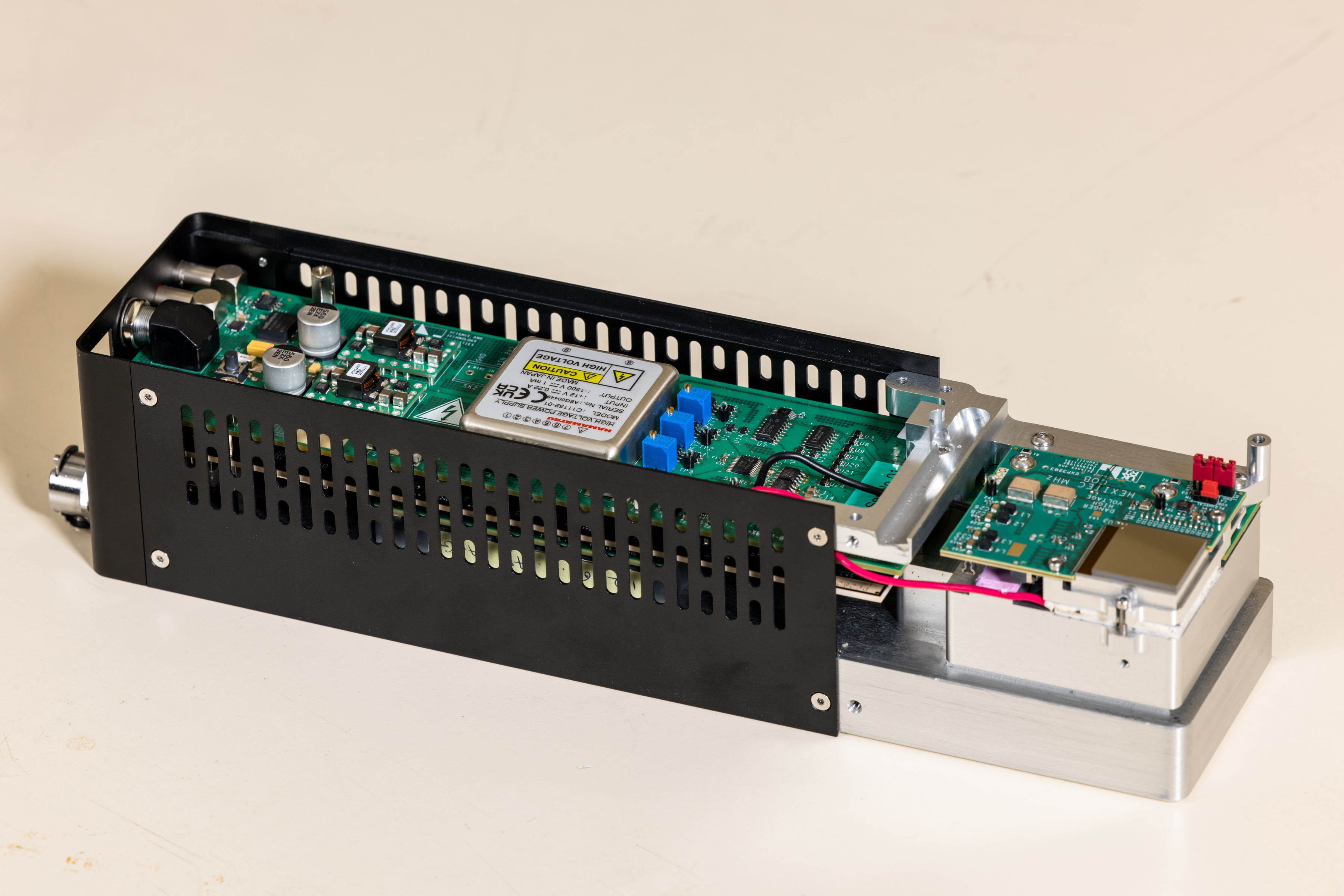High-energy X-rays penetrate deeply into materials, making them useful for investigating dense objects such as welds in steel, geological core sections bearing oil or gas, or the internal observation of chemical reactions inside heavy equipment or machinery.
Application areas include diverse fields such as materials science, medical imaging, illicit material detection, and X-ray astronomy.
Detecting these high-energy X-rays requires a conversion material referred to as a detector. In this case, the semiconductor Cadmium-Zinc-Telluride (CdZnTe, or CZT as it’s often known) was chosen as the detection material for its performance at room temperature.
To evaluate the behaviour of the CZT detectors being developed for the consortium, an ASIC called PIXIE was designed by Technology's ASIC Design Group.
Used by the consortium to investigate charge induction and the small pixel effect in the detectors, this ASIC consists of three separate arrays of 3 x 3 pixels on a 250μm pitch and a single array of 3 x 3 pixels on a 500μm pitch.
Each pixel contains a charge amplifier and output buffer allowing the induced charge pulses from each pixel to be read out.
Following the development of the PIXIE ASIC, efforts turned towards developing a pixellated readout ASIC capable of being bonded to a pixellated CZT detector.
This became known as the HEXITEC ASIC and exists in a variety of pixel array formats, the largest being the 80x80 pixel version.
Gold-stud bonding is used to mount a pixellated detector to the ASIC, with a one-to-one connection between the detector and ASIC pixels.
Each ASIC pixel contains a charge amplifier, a CR-RC shaping amplifier, a second order low pass filter, and a signal-peak track-and-hold circuit.
The charge deposited in a corresponding detector pixel is read by the ASIC pixel and the peak amplitude at the output of the second order filter is stored as an analogue value to await readout from the array, which occurs in a rolling shutter fashion from one side of the array to the other.
In this way, the position and total charge deposited for each X-ray event detected are recorded.
The assembled detectors can be arranged as tiles to build larger pixel arrays.
 A close-up of the HEXITECMHz
A close-up of the HEXITECMHz
The rolling shutter method of analogue readout used on the HEXITEC ASIC limited the maximum frame rate of the 80x80 version to 10kHz.
At this speed, the detector system was able to deliver per-pixel X-ray spectroscopy with an energy resolution of <1keV but was limited to fluxes of 104 photons/s/mm2, in turn limiting the suitable application areas.
To provide a spectroscopic X-ray imaging capability for higher flux applications a new generation of the HEXITEC ASIC was developed.
Known as HEXITECMHz, development began in 2018 to increase the frame rate to 1MHz, allowing spectroscopic imaging at photon fluxes above 106 photons/s/mm2 while maintaining the same spectroscopic performance as the original HEXITEC ASIC.
The right-first-time design philosophy delivered the first working ASICs in 2022. These perform as they were designed to, opening a new range of application areas for the HEXITEC brand.
Lawrence Jones, Design Engineer, said:
"Of all the projects that have influenced the direction of my career, HEXITEC is probably the most significant. Little did I see when the project began nearly two decades ago, what sort of impact it would have on the field of high-energy X-ray imaging.
"My involvement began with the design of the PIXIE ASIC, which was used to characterise the X-ray sensors during the early stages of development. I also designed a full readout chip over several iterations, which would become the original HEXITEC ASIC—now successfully used across a wide range of scientific applications.
"It’s quite rare to see an ASIC project that flexible, as they’re often tailored to a single purpose. It really highlights the merit of designing with adaptability in mind.
"My earlier work on HEXITEC laid the groundwork for its latest iteration, the HEXITECMHz ASIC. This was designed to address the evolving demands of X-ray sources, which required faster imaging systems capable of handling significantly higher photon fluxes. HEXITECMHz achieved a frame rate one hundred times faster than its predecessor and opened the door to even more potential applications.
"The development of the ASIC wasn’t without its difficulties. Limited funding meant there was only one opportunity to get it right and much of the work took place during lockdown. Despite this, the ASIC turned out to be a right-first-time design—something that wouldn’t have been possible without the dedication and expertise of everyone involved."
More information
High Energy X-ray Imaging Technology
Written by the ASIC Design Group.
